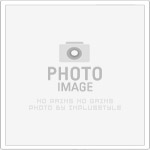In the evolving world of apparel and accessories, the embroidered patch has remained a timeless element of self-expression, identity, and tradition. From military insignias to school badges, fashion statements to commemorative designs, embroidered patches serve as durable and eye-catching emblems of meaning. They bring designs to life with thread, fabric, and skill—transforming simple materials into bold symbols.
What Is an Embroidered Patch?
An embroidered patch is a piece of fabric, usually backed with stitching and designs created using threads, meant to be attached to clothing or accessories. These patches are commonly sewn or ironed onto garments, serving as either decorative embellishments or practical identifiers. The embroidery technique involves threading images or text into a base fabric, resulting in a raised and textured design.
While simple in concept, embroidered patches are powerful tools for communication. They tell stories, showcase brand identities, signify group belonging, and mark achievements or events.
Common Uses of Embroidered Patches
1. Military and Uniform Use
The embroidered patch has a long and proud history in military settings. Patches identify rank, unit, mission involvement, or honors. They serve a dual purpose—practical and symbolic—instilling pride and unity among members.
2. Corporate Branding
Many companies use embroidered patches on staff uniforms to create a professional appearance and reinforce branding. These patches are typically durable and withstand frequent washing, making them ideal for everyday wear in the workplace.
3. Clubs and Organizations
Clubs, such as biker groups, scout troops, and academic societies, rely on embroidered patches to show membership, roles, or achievements. Wearing such a patch reflects identity and status within the group.
4. Events and Souvenirs
Festivals, competitions, and conventions often create limited-edition embroidered patches. These patches serve as physical keepsakes that remind attendees of their experiences.
5. Fashion and Personal Style
Embroidered patches are popular in the world of fashion. Designers apply them to jackets, bags, jeans, and hats to give garments unique character. Patches also offer individuals a way to personalize their clothes with humor, beliefs, or creative designs.
Types of Fabrics Used in Embroidered Patches
Choosing the right base fabric is essential in determining how a patch looks, feels, and lasts. Several common fabrics are used for creating embroidered patches:
1. Twill Fabric
Twill is the most commonly used base for embroidered patches. It has a smooth surface and a distinctive diagonal weave, which provides strength and a clean background for stitching. Twill can support both detailed designs and bold, simple logos.
2. Felt Fabric
Felt is thicker and softer, often giving the patch a vintage or classic aesthetic. It doesn’t fray easily, making it ideal for patches with unusual shapes or edges. Felt pairs especially well with bold, high-contrast embroidery.
3. Canvas
Canvas fabric is heavier and highly durable, making it suitable for outdoor wear or rugged environments. It can handle dense stitching and holds its shape well over time.
4. Polyester and Cotton Blends
These are lightweight and versatile fabrics, offering a balance between smooth texture and flexibility. Cotton provides a soft look, while polyester increases resistance to moisture and wear.
5. Specialty Fabrics
Velvet, denim, or leather are sometimes used to create unique, high-end embroidered patches. These materials are chosen when texture and visual richness are desired, though they require more skill and precision during production.
Backings and Borders: Function Meets Style
The reverse side and edges of an embroidered patch are just as important as the front. These features determine how the patch is attached and how durable it will be.
Patch Backing Types:
-
Sew-on Backing: Traditional and most durable; the patch is stitched onto the garment.
-
Iron-on Backing: Coated with heat-activated adhesive, this backing allows easy application with a household iron.
-
Velcro Backing: Often used in military and tactical applications where patches need to be removed or swapped.
-
Adhesive Backing: Temporary and best for one-time or short-term use.
Patch Border Styles:
-
Merrowed Border: A thick, rounded stitched edge that gives a clean and professional look; suitable for simple shapes.
-
Heat-Cut Edge: A laser-cut edge that works for patches with complex or custom outlines, offering a crisp finish.
Why Choose an Embroidered Patch?
1. Durability
Unlike printed designs, embroidery is long-lasting. Colors do not fade easily, and threads do not peel off with frequent use or washing. Embroidered patches are especially ideal for workwear and uniforms.
2. Texture and Quality
The raised stitching adds a tactile dimension and gives the patch a premium appearance. The craftsmanship is evident in every thread, showcasing detail and quality.
3. Versatility
Embroidered patches can be used on everything from formal uniforms to trendy streetwear. They can be subtle or bold, personal or professional, making them suitable for nearly every application.
4. Customization
From color choices and fabric types to shape and size, every aspect of an embroidered patch can be customized. This allows businesses and individuals to bring their exact vision to life.
Conclusion
The embroidered patch remains a cherished element in both functional and decorative textile design. Its rich history, paired with modern customization techniques, ensures that it continues to play a vital role across fashion, branding, uniform design, and personal expression. With a perfect balance of craftsmanship, durability, and aesthetic value, embroidered patches are more than just accessories—they are lasting symbols of identity, pride, and creativity.
Whether you are a designer, a business owner, or simply someone who wants to add personality to your wardrobe, the embroidered patch offers a stylish and meaningful way to make your mark.


 當舖小額借款讓薪貸告訴你借款方式
當舖小額借款讓薪貸告訴你借款方式